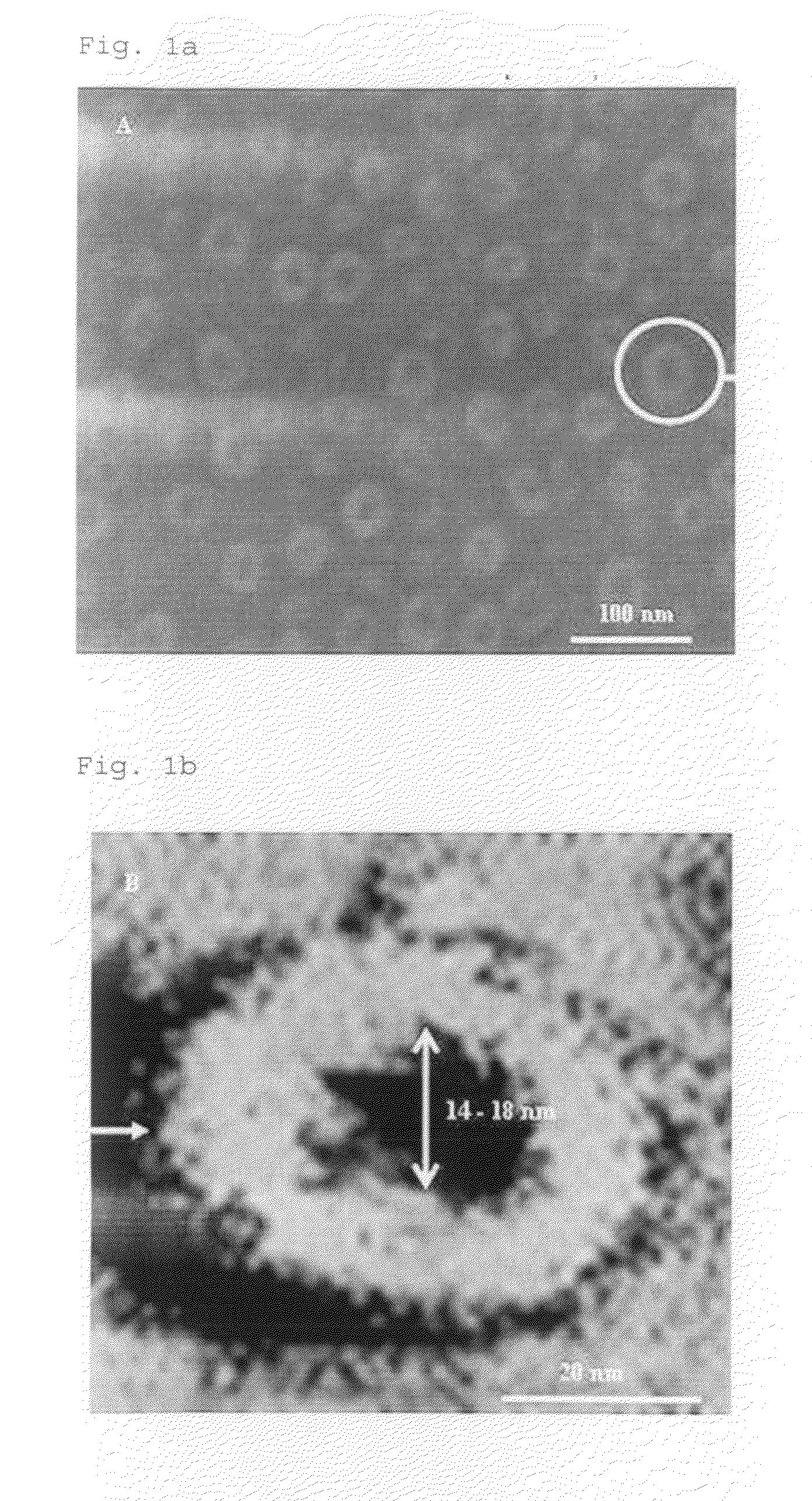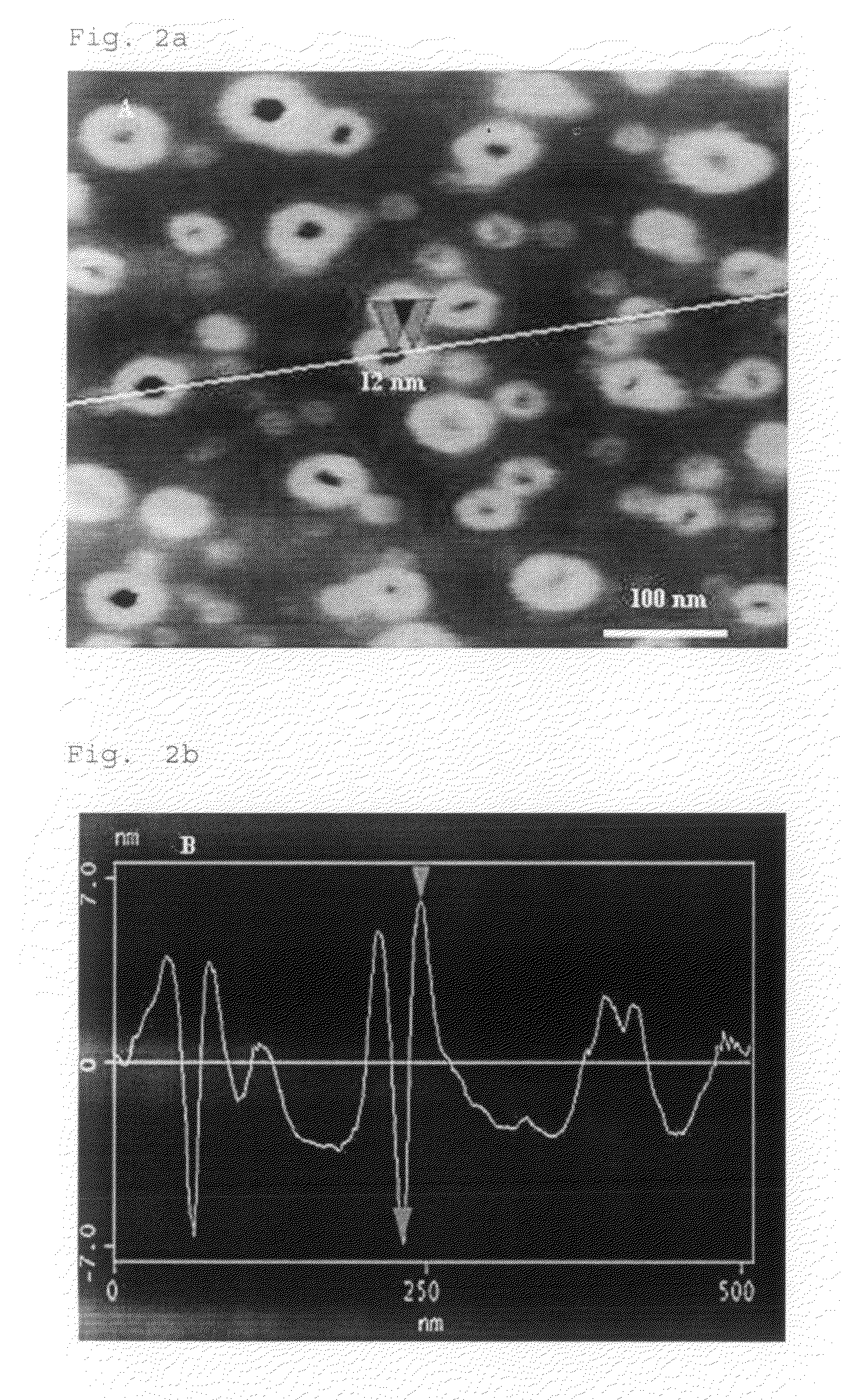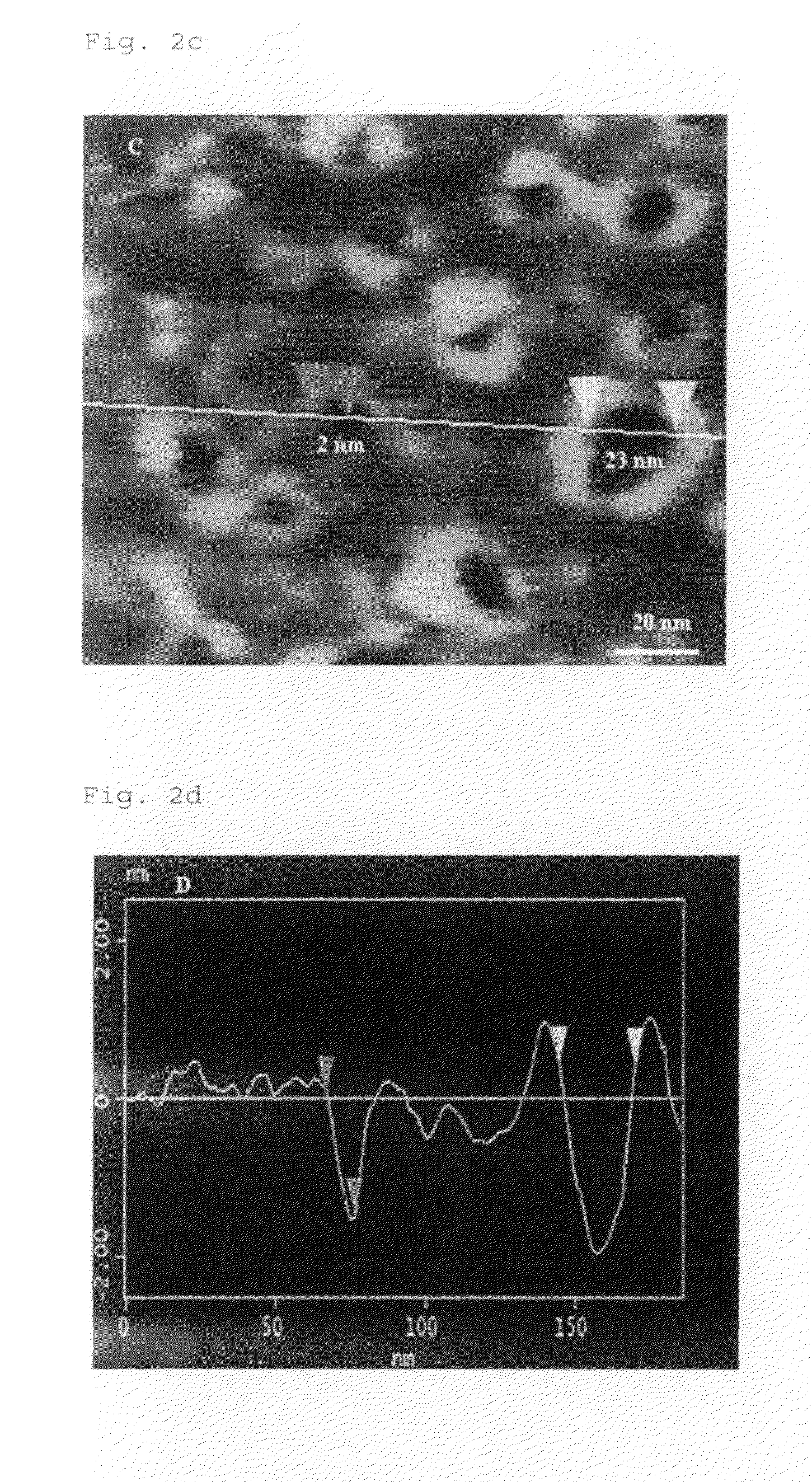Nanocrater catalyst in metal nanoparticles and method for preparing the same
a metal nanoparticle and catalyst technology, applied in the field of nanoparticle catalysts in metal nanoparticles, can solve the problems of not being commercially available, not significantly progressing in the study and development of metal nanoparticles, and not being able to achieve the desired structure of metal nanoparticles, etc., to achieve a simple and economical process
- Summary
- Abstract
- Description
- Claims
- Application Information
AI Technical Summary
Benefits of technology
Problems solved by technology
Method used
Image
Examples
example 1
Preparation of Nanocrater Iron Catalyst
[0046]For preparation of a nanocrater iron catalyst, first of all, an iron film with a thickness of about 10 nm was vapor-deposited on a silicon substrate at 200° C. by means of a sputtering process. Then, the deposited substrate was plasma etched using 100 sccm of nitrogen gas with a plasma power of 600 W at 800° C. for 1 minute.
[0047]Among the above processes, the metal films separated and etched in the range of nano units by the plasma treatment process produced a plurality of vacancies and dislocations in inherent structure of the metal nanoparticles. Next, after preparing an iodine-containing nitric acid / ethanol solution which was a solution mixture of 100 Ml of ethanol and 20 Ml of nitric acid containing 3.5 g of iodine (I), the metal nanoparticles with vacancies and dislocations in structure thereof underwent the etching process in the prepared solution for 3 hours. As a result, a nanocrater iron catalyst with a nanocrater form of hole s...
example 2
Preparation of Nanocrater Cobalt Catalyst
[0048]For preparation of a nanocrater iron catalyst, first of all, a cobalt film with thickness of about 10 nm was vapor-deposited on a silicon substrate at 200° C. by means of a sputtering process. Then, the deposited substrate was plasma etched using 90 sccm of nitrogen gas with a plasma power of 700 W at 700° C. for 1 minute.
[0049]Among the above processes, the metal films separated and etched in the range of nano units by the plasma process produced a plurality of vacancies and dislocations in inherent structure of the metal nanoparticles. Next, after preparing an iodine-containing nitric acid / ethanol solution which was a solution mixture of 100 Ml of ethanol and 20 Ml of nitric acid containing 3.5 g of iodine (I), the metal nanoparticles with vacancy and dislocation in structure thereof underwent the etching process in the prepared solution for 3 hours. As a result, a nanocrater cobalt catalyst with a nanocrater form of hole structure at...
example 3
Fabrication and Growth of Carbon Nanotubes by Using Nanocrater Iron Catalyst
[0050]By means of plasma chemical vapor-deposition using the nanocrater iron catalyst prepared in Example 1, carbon nanotubes were fabricated. More particularly, the carbon nanotubes were produced using the nanocrater iron catalyst together with 85 sccm of nitrogen gas and 15 sccm of methane gas for 8 minutes in desired conditions of plasma power of 700 W at 900° C. under 23 Torr of pressure.
PUM
| Property | Measurement | Unit |
|---|---|---|
| Fraction | aaaaa | aaaaa |
| Percent by mass | aaaaa | aaaaa |
| Thickness | aaaaa | aaaaa |
Abstract
Description
Claims
Application Information
 Login to View More
Login to View More - R&D
- Intellectual Property
- Life Sciences
- Materials
- Tech Scout
- Unparalleled Data Quality
- Higher Quality Content
- 60% Fewer Hallucinations
Browse by: Latest US Patents, China's latest patents, Technical Efficacy Thesaurus, Application Domain, Technology Topic, Popular Technical Reports.
© 2025 PatSnap. All rights reserved.Legal|Privacy policy|Modern Slavery Act Transparency Statement|Sitemap|About US| Contact US: help@patsnap.com



